National Overview
The most recent cold front is a formidable thing, that’s for sure. Look at that structure and intensity in this static image alone! Usually a front like this is followed by strong high pressure which brings northwest winds and means the end for migration over the area. If you look in the Upper Midwest, though, you’ll see that behind the front is still some migration action as well as another band of precipitation. This second band is actually a second front and therefore is allowing for double-duty migration between the two frontal boundaries. Because of the intensity of the first front, migration in the immediate vicinity of the front was considerably lower that the precipitation-free areas to the east and west.

Below are the radar loops from sunset last night through 5:00am (central time) this morning
In an attempt to get the radar posted as quickly as possible, I will be publishing “as I go” each morning. Therefore you may see some incomplete posts throughout the early morning hours (5-6am Central; 6-7am Eastern Time). We’ll test out this method for a few weeks and see how well it works… your feedback, of course, is most welcome!
Mid Atlantic
Delaware & New Jersey
Frames are every 1/2 hour. Click on the thumbnail to view the full-sized animation.
Go to the coast. Specifically, go to Cape May (south) or Sandy Hook (north). Migration was heavy with lots of birds entering the region overnight and a strong directional movement from SSW->ENE. Birds were over clearly offshore this morning meaning that coastal hotspots from Cape May to Sandy Hook should be good for concentrations of birds today. Overshoots are possible given the geographic scope of this migration event, although don’t expect large numbers of Neotropical migrants yet- there are just not enough of them in the system this early. Singles of long-distance migrants are possible though. Go bird!
Upper Midwest
Wisconsin
Frames are every 1/2 hour. Click on the thumbnail to view the full-sized animation.
Since the frontal boundary coincided so closely with the onset of migration, it’s likely that less birds decided to migrate last night than would have under clearer conditions. That said, both the Milwaukee and Green Bay radars indicate a flight last night and strong westerly winds clearly pushed birds to the Lake Michigan lakes shore. Birders in eastern Wisconsin should definitely check hotspots along the lake for wayward migrants this morning, and as with everywhere else that experienced precipitation last night, check the local flooded fields and open areas for grounded shorebirds. The key today will be to pick strategic locations out of the strong winds, otherwise birds will be really hard to detect. Good birding!
Iowa & Illinois
Frames are every 1/2 hour. Click on the thumbnail to view the full-sized animation.
Again we had heavy migration out of Davenport IA heading straight up into south-central Wisconsin this morning as the frontal boundary cleared that area late last night. Strong westerly flow definitely pushed some of these birds eastward putting them more in line with Dane County (for instance). Looking at the Chicago radar birds were clearly migrating during the passage of the front and many birds dropped out during the heaviest storms. Birders in the Chicago area should be checking the lake shore at first light this morning as birds are expected to have been pushed to the shoreline by the strong west winds. Check flooded fields and areas out of the wind for wayward migrants seeking shelter following the storms (especially shorebirds).
Minnesota
Frames are every 1/2 hour. Click on the thumbnail to view the full-sized animation.
Duluth, you were in a holding pattern all night as strong east winds coming off of the lake combined with an absolute shutout storm system to keep all birds grounded. Expect little if any change on the ground this morning.
As always, woodcreeper.com depends on YOU to report your sightings and be our ‘eyes on the ground’, so please come back and give us an idea of how we’re doing predicting birding conditions in your neck of the woods.
ÂFor migration updates covering other regions check-
Badbirdz Reloaded – Angel & Mariel cover Florida and the Southeast
Birds Over Portland – Greg blogs about the Pacific Northwest
Nemesis Bird – Drew and company give you the skinny on Pennsylvania
Tom Auer (aka The Skua) – Tom’s blog covers New England
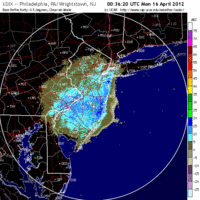
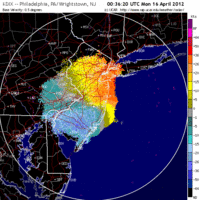
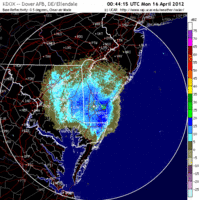
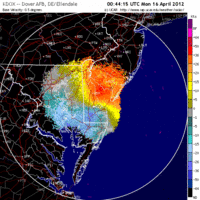
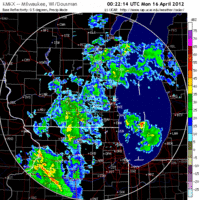
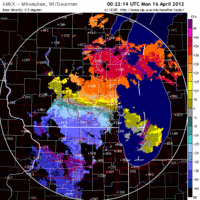
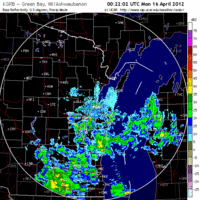
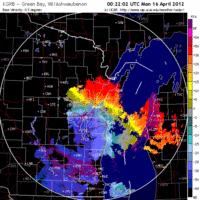
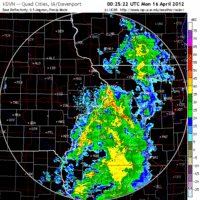
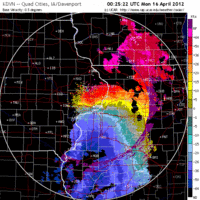
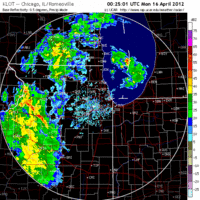
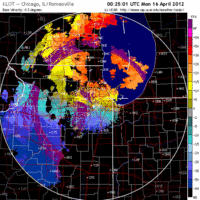
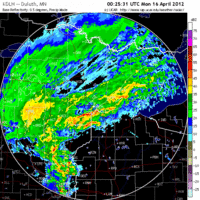
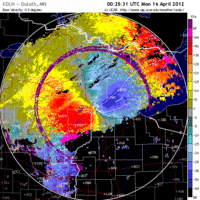
6 responses to “The migration floodgates remain open”
I loved seeing you back again! I hope you are settled in, and your family is well!
I had a yard filled with white throats yesterday, Fort Washington, PA. I’ve been wondering where they have been. Watching the migrations gave me hope, and then they arrived.
Bird song makes my day better, every time.
Maureen
Thanks Maureen. We’re doing great and the kids are all settled in… although our eldest definitely misses her NJ friends (but that gives us more reasons to go back and visit soon!) I hope you have a great migration season.
Rutgers Gardens had some migrants around, though numbers weren’t high. Diversity was pretty much what you’d expect: one Blue-headed Vireo, lots of rumps and palms, Hermit Thrushes, Gnatcatchers, Kinglets, and plenty of short distance migrants as well. It’ll be interesting to compare results from Sandy Hook…your prediction for at least one inland NJ site was spot on!
Thanks for the report, Brian! Good Birding!
County Highway V ponds north of Madison held plenty of shorebirds and ducks, although the Hudwits and Marbwits from yesterday were conspicuously absent. 5 Great Egrets flying north and a single Semipalm Plover were highlights.
Here’s a link to the list:
http://ebird.org/ebird/view/checklist?subID=S10464221
I birded one of my migration spots on the Delaware River in Gloucester County, NJ this morning. Thing is I don’t know what was around from Sunday – because the place was loaded! Looked like a fall “fallout”. Anyway, nothing out of the ordinary – just great numbers in a small stretch of trail.
80 Yellow-rumped Warblers, 14 Palms, 3 Black and Whites, 4 Common Yellowthroats, hundred of Robins, 10 Gnatcatchers, 4 House Wrens, 3 Ruby-crowned Kinglets, 6 Brown Thrashers, hundreds of Swamp and White-throated Sparrows, American Goldfinches and Juncos in good numbers also.